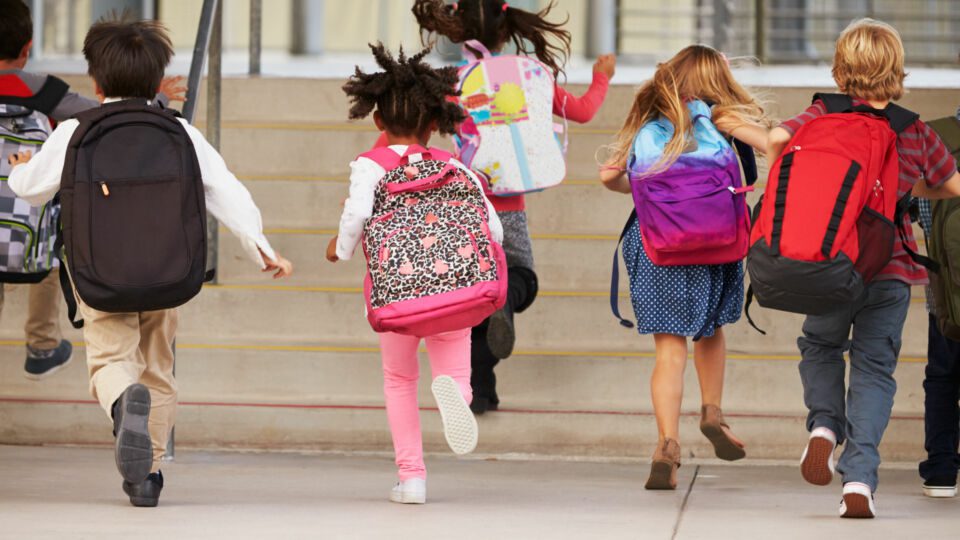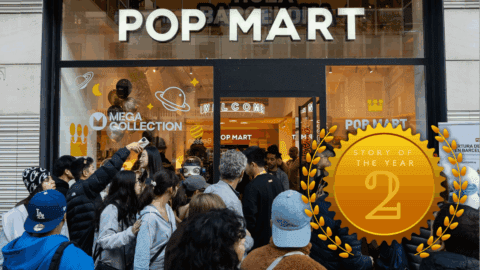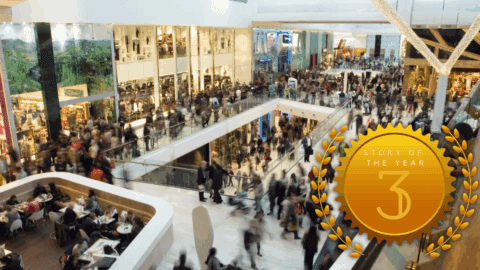Back-to-school surveys across the retail sector point to a strong season, spurred by pent-up consumer demand.
Deloitte indicated that parents’ projected spend was up 16% year over year, from $529 per child to $612. Although this total amount does vary from firm to firm, JLL survey participants expected to spend $356.94 on average while RetailMeNot noted that households could spend up to $1,333, reports consistently point to a clear rise year over year — and in some cases, even against pre-pandemic results.
The RetailMeNot survey in particular pointed to parents’ desire to “make up for lost time” and help their children have a successful in-person school year after lockdowns and virtual learning. In fact, 58% said school would be a bigger deal this year and 56% said they are more excited about shopping for back-to-school items this year.
But what is the expected continuation of these trends, especially as the Delta variant continues to spread across the U.S.? Jeff Orschell, EY’s Americas Consumer Retail Leaders, noted that global data as well as the firm’s consumer research point to demand remaining elevated, despite the uncertainties.
“We’ve done our Future Consumer Index seven times during COVID-19 and at this point, 19% say they have no fear at all [about COVID-19] and 33% say they’ll feel more comfortable in the next six months,” Orschell said in an interview with Retail TouchPoints. “With this data in mind, and the large majority of kids going back to in-person learning, I don’t think [the Delta variant] will impact back-to-school shopping.”
Orschell explained that before the Delta variant hit the U.S., it had a pattern of spreading very rapidly and dying down rapidly. “That’s what we’ve been tracking in other countries, so the question for retailers is: How significant is that peak going to be in the U.S. and how long will it last? The comfort for us is that it didn’t last as long as we thought [in other areas], so I’m still bullish on back to school.”
Orschell and other experts believe that like past years, this back-to-school season has underlying trends that will likely extend into the holidays, making now the opportune time for retailers to prepare. The top four trends, uncovered by our experts, are:
1. The Compression of Shopping Seasons Will Continue
Many shoppers were burned during the pandemic due to out-of-stock issues and delivery delays. They attempted to beat the rush by shopping earlier and more frequently — especially online. A recent Shopkick survey proposes that these behaviors are likely to continue through the holiday season: 22% of consumers plan to shop for the holiday well ahead of schedule and 25% even plan to finish their shopping by Thanksgiving, which historically has been the “official kick off” of the holiday shopping season.
Retailers need to prepare for shifts in product demand by allocating inventory in the right stores, warehouses and distribution centers. This will help them prepare their omnichannel fulfillment operations and ensure items get to customers in the most efficient, and profitable, way possible.
“Ecommerce has been growing 10% to 15% every year and that was exacerbated during COVID-19,” said Natalie Kotlyar, National Managing Partner; Industry Groups, Retail & Consumer Products Industry National Leader, at BDO in an interview with Retail TouchPoints. “Many consumers like shopping online and will continue to shop online, so retailers that understand their customers will not only utilize inventory in the warehouse but also equip their stores to be mini warehouses.”
ADDITIONAL LISTENING:
2. Inflation and Limited Product Availability Reduce ‘Hot Discounts’ for Shoppers
Inflation has increased the cost of production for certain product categories, and that trickles down into overall product availability. Although the back-to-school season is typically a prime time for special deals and promotions, retailers need to consider how these slashed prices align with overall product demand and availability. Otherwise, retailers will risk eating into their margins significantly.
“I believe brick-and-mortar retailers are ready for a very strong back-to-school season, especially the traditionally strong discounters and children’s stores,” said Greg Maloney, CEO & President of Retail at JLL Americas. “However, availability of products continues to be a challenge for many retailers. Consumers are ready to shop, and they will if there is product to purchase.”
Kotlyar added that of the numerous “a-ha moments” the back-to-school season will unearth, supply chain operations and margins are the two key ones.
“I know everyone is struggling with supply chain right now, and I see that continuing on into the holiday season and even the first half of next year,” she said. “The key for retailers is to be nimble, and to be able to reassess the situation quickly and put things into play that are necessary for success in the season that they’re dealing with.”
For example, with back-to-school, Kotlyar noted that we’re seeing fewer promotions because of supply constraints. Because supply and demand work hand in hand, retailers need to pare back on promotions in order to ensure profitability. “We have high demand and low supply, so there are fewer markdowns now,” Kotlyar added. “I expect that to continue into the fall and the holiday season.”
3. Eagerness to Return to Stores Means Retailers Need to Tackle Labor Shortages, Stat
Make no mistake, online shopping is here to stay. Orschell noted that EY’s most recent consumer research found that 60% expect their new, largely digital, shopping habits to stick. Moreover, the firm’s latest Future Consumer Index found that 38% of consumers intend to increase their online shopping — and only visit stores that provide great experiences.
But back-to-school research points to a renewed excitement around the store: 61% of consumers who participated in the JLL survey said the store was a key outlet for back-to-school shopping inspiration. Nearly half (48%) of these parents said they would shop at open-air centers, while slightly fewer (40.1%) said they would shop at enclosed malls for their back-to-school needs.
“After an unexpected school year in 2020 and a different shopping year, consumers are excited to return to in-person shopping for the back-to-school season, especially the ones who are vaccinated,” Maloney explained. “With that, consumer confidence is very important. If people are fearful, they will retreat. So, it’s important for retailers to make the consumer feel comfortable and safe while shopping in the store.”
Maloney added that he believes retail sales will continue to outpace last year and even comparable sales in 2019. To keep pace with demand and consumers’ expectations for stellar experiences, retailers will need to focus on providing stellar service.
This is where insight into omnichannel behaviors and having an agile workforce strategy can play an invaluable role, according to Kotlyar. “Many retailers are struggling to have the right amount of labor in warehouses as well as in stores to respond to the various demands in-store and online shoppers,” she said. “I think the labor market may open up more once unemployment and government subsidies end, but the core problem is having adequate and appropriately staffed spaces because at the end of the day, consumers want customer service and retailers want to make sure they can provide that level of service.”
ADDITIONAL LISTENING:
4. Retailers Will Need to ‘Be Everywhere the Consumer Is’
Despite the similarities in back-to-school spending behaviors, experts note that this still a time of rampant change for consumers — and in turn, retailers. Orschell shared that with its March 2021 research, EY found that 80% of consumers are still changing the way they shop. That is why he believes the top priority for retailers going into the holiday season will be to cater to customers, wherever they are. Retailers will need to be prepared to serve shoppers who prefer to shop online, in the comfort of their homes, and still provide stellar in-store experiences for those who are thrilled to be back in shopping malls.
Kotlyar agreed that the increasing complexity of the customer journey requires brands and retailers to be more thoughtful and multi-faceted with their marketing strategies. By tying timely emails with location-specific information and embracing the immediacy of text-messaging, for example, retailers can get their share of consumers’ wallets.
“The key is always staying relevant to the consumer,” Kotlyar advised. “That means communication with the consumer, not markdowns. It’s about embracing promotional emails, texts, [or whatever channels] they believe are appropriate for communicating with their respective customers and potential customers. The goal is that they stay relevant that this consumer ultimately chooses them as their as their retail choice.” In the digital realm specifically, she pointed to social commerce and specifically, livestreaming, as a key opportunity for retailers to start building engagement, especially around new holiday campaigns and releases.
ADDITIONAL LISTENING:













